VAO Symposium: 02.-04. April 2025 in Kaprun (Salzburg)
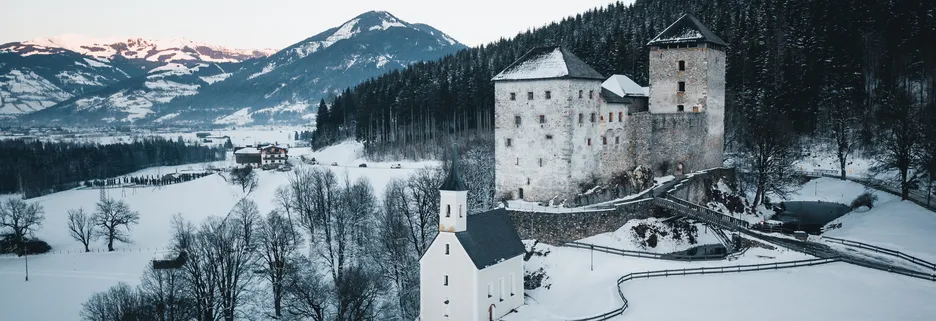
Every two years, the VAO Symposium facilitates the exchange of the latest research findings and future collaborative research pursuits among members and interested individuals. The symposium emphasizes productive interdisciplinary collaboration among those working in the Atmosphere, Cryosphere, Hydrosphere, Biosphere, Relief, and Lithosphere fields. For this we focus more on transdisciplinary workshops than on individual talks and aim to develop future research ideas and projects over two days. The outcomes of the symposium will guide the network's direction and impact in the coming years.
The VAO Symposium is planned as a 48-hour event in the beautiful setting of the castle in Kaprun. The conference starts and ends at midday to allow participants to travel on the same day.
The preliminary timetable and information can be found >here<.
Further details about the event, including registration and submission information, can be found on the VAO website.
TUM-ALPHA monitors the saftey of mountain huts

TUM ALPHA is involved in the assessment of several huts of the German Alpine Association (DAV) with regard to alpine natural hazards. This initiative is crucial for the protection of these sensitive and important sites in the Alpine region, as well as for the safety of numerous hiking routes. Notable huts included in this assessment are the Stüdlhütte (left), Hochwildehaus (middle) and Landshuter Europahütte (right).
New publication on bedrock erosion in Communications Earth & Environment
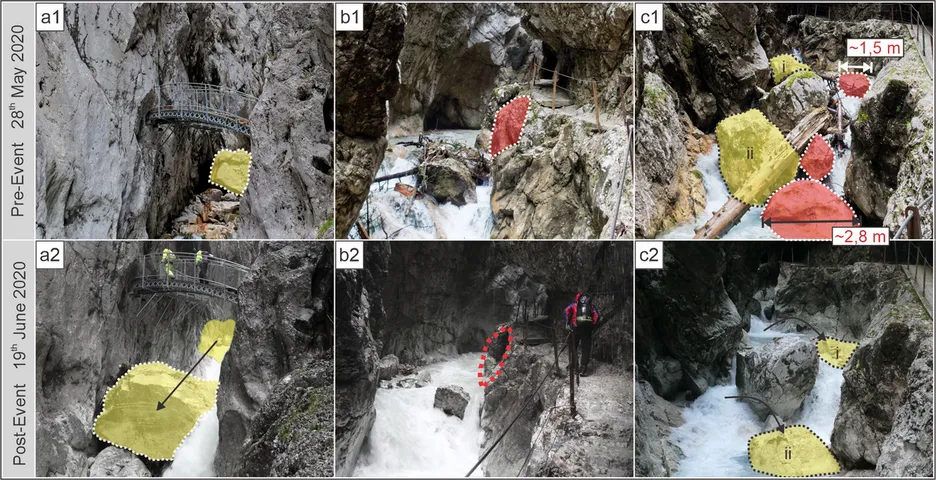
What happens when a rapid, sediment laden flow (hyperconcentrated flow) is forced through a narrow and deeply incised bedrock gorge? In the case of the event in June 2020 in the Höllental-gorge, the geomorphic changes were even visible by eye. Boulders with volumes up to 20 m3 were shifted, broken off rock fragments from the channel walls left visible scarps and the channel appeared as if someone went through with sand-blasting equipment. How we quantitatively assessed the erosion power of this hyperconcentrated flow and what implications the results have for long-term bedrock incision in alpine gorges is now published in our paper:
Stammberger, V., Jacobs, B. & Krautblatter, M. (2024): Hyperconcentrated flows shape bedrock channels. Commun Earth Environ 5, 184. https://doi.org/10.1038/s43247-024-01353-3
For a quick read head over to this “behind the paper” blogpost: https://communities.springernature.com/posts/bedrock-erosion-in-a-180-m-deeply-incised-gorge
Integrated research on climate change and natural hazards at the Kitzsteinhorn summit station

TUM Alpha contributes to an innovative research project at the Kitzsteinhorn focusing on the monitoring of climate change induced natural hazards. This collaborative effort combines extensive laboratory studies with field work to improve our understanding of environmental changes. Led by the research organisation Georesearch, the project aims to develop effective strategies for risk assessment and mitigation in alpine regions.
New publication on Hochvogel landslide published in Earth Surface Dynamics

With more than 4 years of real-time monitoring data from the Hochvogel early warning system, we answer what controls the preconditioning of massive rock slope failures and what will most likely be the final trigger. By correlating slope displacements with meteorological and seismic data, we found that water from rain and snowmelt is the most important driver. Our approach is applicable to similar sites and indicates, where future climatic changes, e.g. in rain intensity and frequency, may alter the preparation of slope failure.
Leinauer, J., Dietze, M., Knapp, S., Scandroglio, R., Jokel, M., and Krautblatter, M.: How water, temperature, and seismicity control the preconditioning of massive rock slope failure (Hochvogel), Earth Surf. Dynam., 12, 1027–1048, https://doi.org/10.5194/esurf-12-1027-2024 , 2024.
Early warning systems in the Höllental Gorge
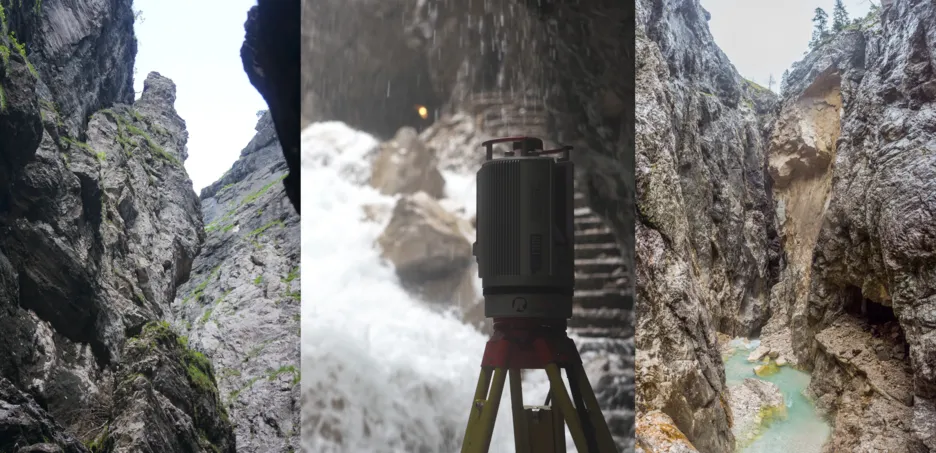
In cooperation with the German Alpine Club (DAV), TUM-ALPHA has successfully designed and implemented an early warning system in the Höllentalklamm gorge. This real-time system monitors potential rock movements in the gorge, improving safety assessments and contributing to overall risk management.
RACE: Rapid Adaptation in a changing Climate and Environment
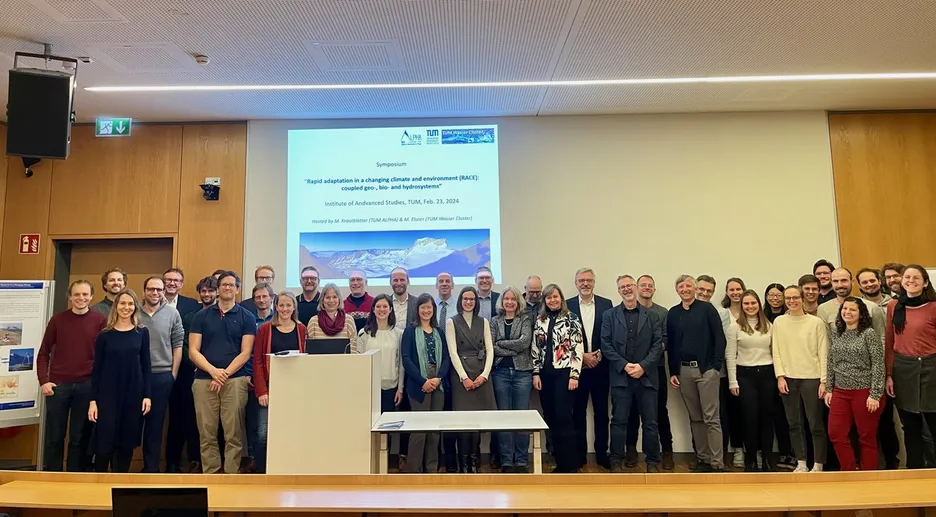
We organized the symposium on "Rapid adaptation in a changing climate and environment (RACE): coupled geo-, bio- and hydrosystems” on Feb. 23rd 2024 in Garching together with the TUM Water Cluster. The program included talks by renomated professors of the TUM to explore future collaborations directed at joint observation, modelling, predictons and measures in coupled geo-, bio- and hydrosystems in the Alpine/Pre-Alpine environments. The Novelty of a combined proposal lies in the complete system approach, anticipating the required speed of change, and addressing the anticipation of nonlinear and non-stationary system transition.
New publication on bedrock erosion in Communications Earth & Environment

A strong collaboration between members of the Landslides group resulted in a new publication analysing the impact of the 2016 cliff fall at the Southwestern slope of Hochvogel (DE-AT) on the subsequent massive sediment redistribution. The publication by Natalie Barbosa co-authored by Johannes Leinauer combined seismic data to decipher the temporal evolution of the cliff fall and high-resolution photogrammetry to determine the general rockfall activity across the summit and quantify changes in sediment redistribution before and after the cliff fall. This publication provides unique generic information on spatial and temporal patterns of rockfall detachment and massive sediment pulses in highly sediment-charged alpine catchments. Additionally, it presents a successful interdisciplinary and collaborative research that closes the gap between high temporal and spatial resolution.
The multi-stage detachment of 130 000 m3 of dolomite rock occurred over two days by a minimum of 6 rockfalls. The subsequent sediment waves exhibit reaction times of 0-4 years in response to the cliff fall sediment input and relaxation times beyond 10 years. The sediment waves manifest with faster response times of 0-2 years in the upper catchment and over 2 years in the lower catchments. The results present the first steps toward a better understanding of the role of sediment input in the frequency, magnitude, and persistence of sediment waves in alpine catchments.
https://esurf.copernicus.org/articles/12/249/2024/esurf-12-249-2024.html
Establishment of an early warning system at the Partnach Gorge
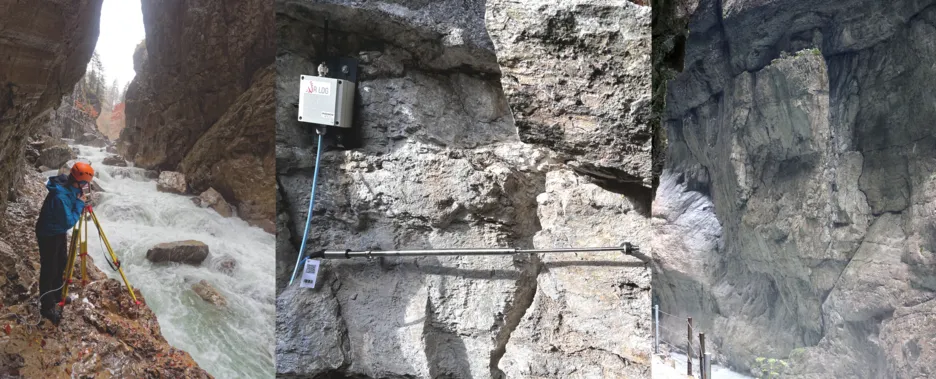
TUM-ALPHA established in cooperation with the town of Garmisch-Partenkirchen a wireless real time early warning system for rock fall events in the Partnach gorge. This system is supported by and updated according to the results of a semi-annual laser scanning campaign and a visual inspection of the rock slopes to identify emerging, potentially instable zones. This system significantly increases the safety level of the natural monument visited by several hundred thousand visitors every year.
New paper online in Communications Earth & Environment

When is a rock slope going to fail? Forecasting the time of an imminent slope failure is still a very challenging task, even with constantly improving monitoring techniques. How can we get reliable prospective forecasts despite the diverse geology and limited number of events?
Our article from the AlpSense project on the forecasting of rock slope failure time is finally published!
Leinauer, J., Weber, S., Cicoira, A., Beutel, J., and Krautblatter, M. (2023): An approach for prospective forecasting of rock slope failure time. Commun Earth Environ 4, 253. https://doi.org/10.1038/s43247-023-00909-z
Here is the article: https://www.nature.com/articles/s43247-023-00909-z
And here an interesting „Behind the paper“ blogpost: https://earthenvironmentcommunity.nature.com/posts/when-is-a-rock-slope-going-to-fail
Kickoff-Event: TUM-ALPHA
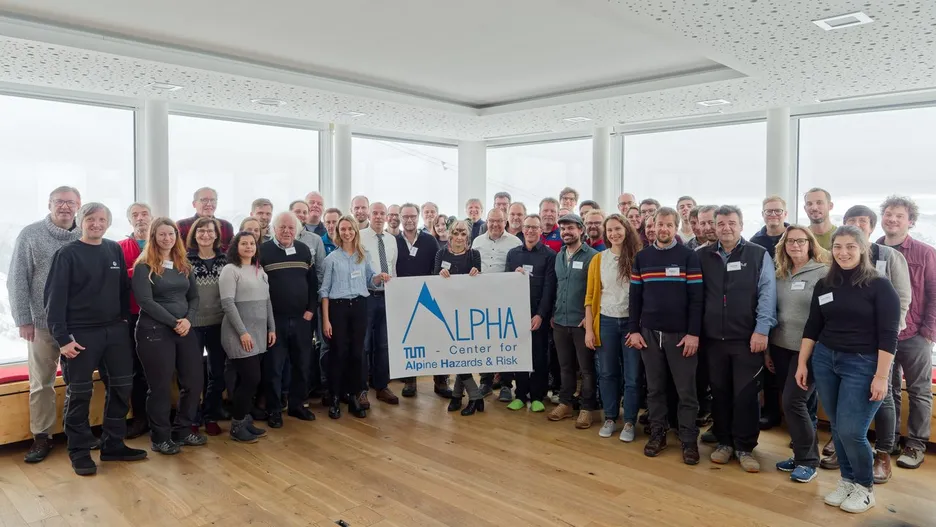
In late November 2023, we officially launched the TUM Center for Alpine Hazards and Risks (TUM ALPHA), under the leadership of Prof. Michael Krautblatter from the Chair of Landslide Research. TUM ALPHA is the first coordinating research center for natural hazards in Germany, dedicated to fostering collaboration across various sectors. Our primary goals include engaging stakeholders from industry, politics, NGOs, and international partner organizations, promoting cooperative research with partners from all Alpine countries, and creating integrated funding opportunities to support our initiatives.
The launch event took place at the Schneefernerhaus Environmental Research Station at the Zugspitze, where representatives from Austria, Switzerland, Italy, France, and Slovenia came together. Following this, over 60 participants convened for a stakeholder meeting focused on alpine natural hazards in the context of climate change, as part of the AlpSenseRely project. Attendees included the Dean of the TUM School of Engineering and Design, representatives from the Bavarian Ministry of Environment and the StMB, state geologists from Bavaria, Tyrol, Salzburg, and South Tyrol, members of the German Alpine Association, Bavarian Mountain Rescue Service, mayors from affected communities, and representatives from cable cars and mountain huts, as well as approximately 10 professors specializing in geo, environmental, engineering, and management fields at TUM.